No products in the cart.
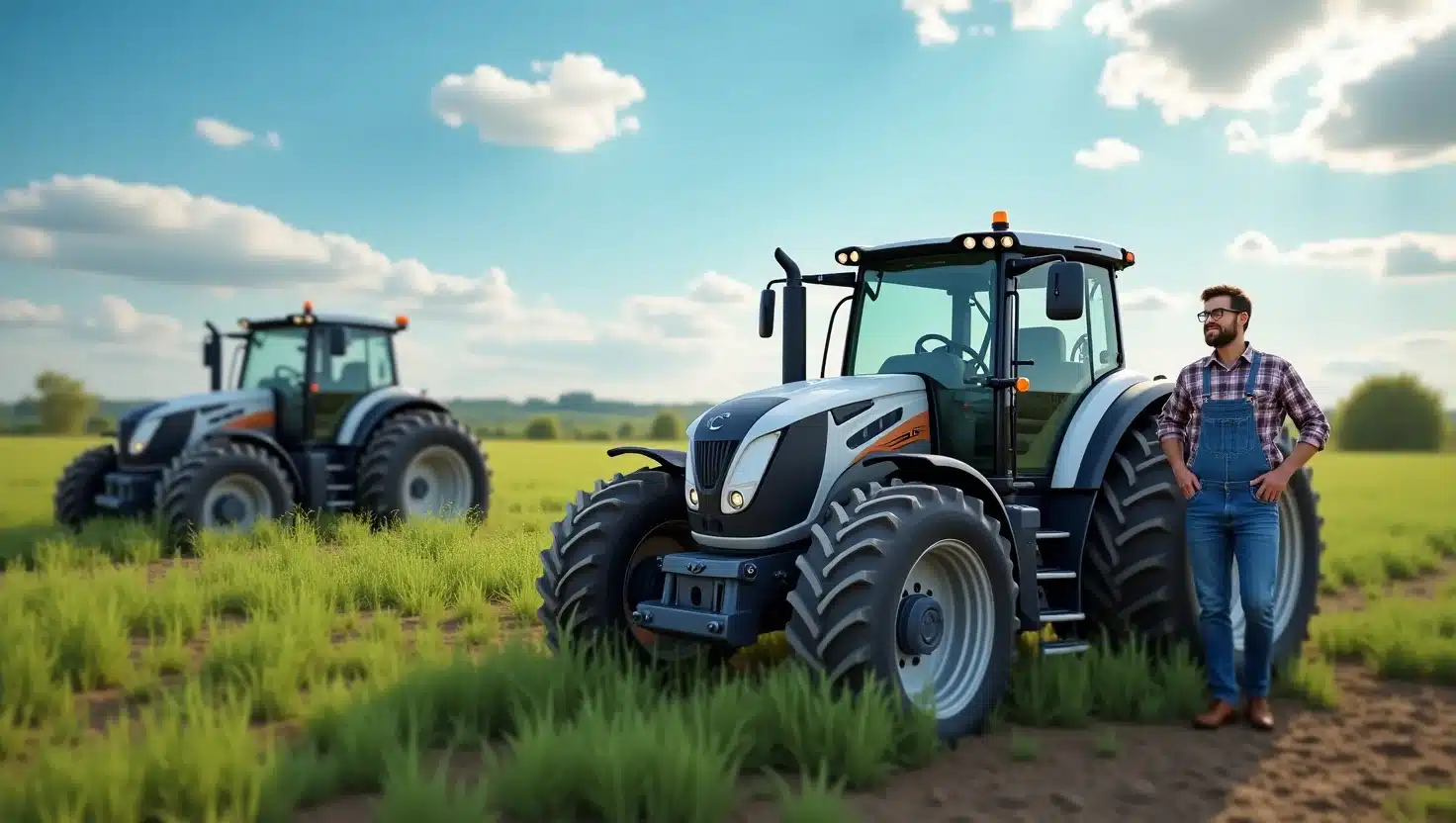
1. Introduction:
Across the world, farmers are grappling with rising costs, shrinking labor pools, and unpredictable climate conditions. These challenges have made traditional farming methods harder to sustain, especially when efficiency and yield matter more than ever. But now, a technological revolution is quietly transforming the landscape: AI-powered tractors.
No longer confined to science fiction or big-budget agribusiness, smart farming tools like autonomous tractors are becoming accessible and practical for farms of all sizes. These machines do more than just drive themselves, they think, adapt, and optimize every movement in the field. From automated soil analysis to real-time decision-making, they’re reshaping the future of farming.
With companies like John Deere and Monarch Tractor leading the charge, AI tractors are gaining popularity not just because they’re innovative, but because they solve real-world agricultural problems. In this article, we’ll explore the challenges farmers face, the rise of AI-driven equipment, and how smart tractors are changing the game for good.
Whether you’re a farmer, agtech investor, or simply curious about the next frontier of agriculture technology, understanding the momentum behind AI tractors is essential.
2. The Problem with Traditional Tractors
Farming is no longer just about hard work, it’s about working smart. Yet, many farms still rely on outdated machinery that hasn’t evolved much in decades. Traditional tractors, though reliable in their time, come with serious limitations that hold farmers back in today’s demanding agricultural environment.
One of the biggest challenges is labor dependency. Tractors require skilled operators, but many regions face acute labor shortages. This leads to delays during planting and harvesting seasons, critical times when efficiency is key. Moreover, older tractors lack precision, resulting in wasted fuel, uneven crop distribution, and excessive soil compaction.
Maintenance is another headache. As machinery ages, breakdowns become more frequent and costly. Plus, traditional tractors operate with little to no data, leaving farmers guessing instead of making informed decisions.
With rising fuel costs, increasing regulatory pressure on emissions, and growing demand for sustainable practices, these inefficiencies are no longer affordable. The problems with traditional tractors have created a clear need for a smarter, data-driven solution, one that can reduce waste, improve productivity, and run with minimal human intervention.
This is exactly where AI-powered tractors step in, offering not just automation, but intelligent optimization for every acre.
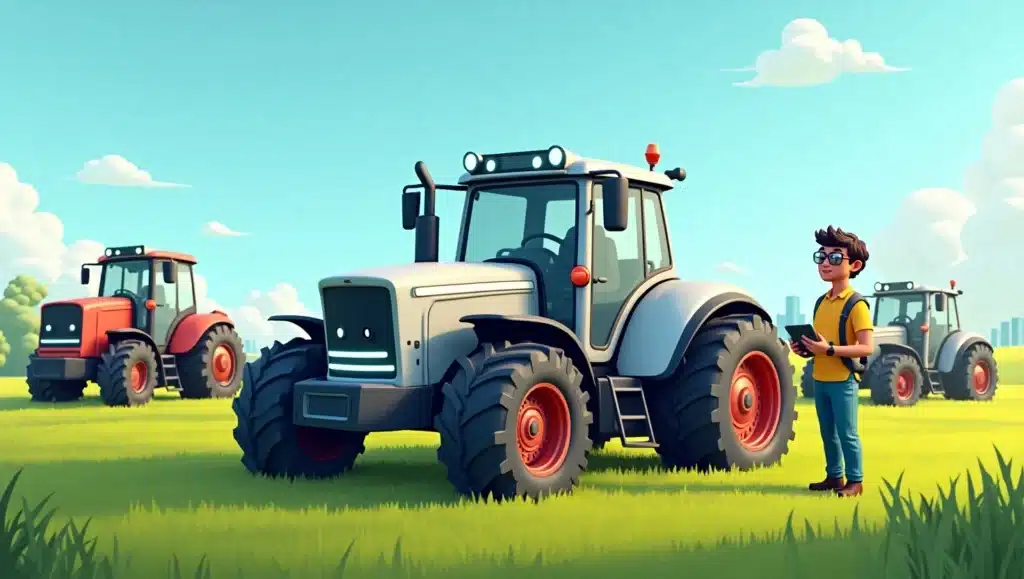
3. The Rise of AI-Powered Tractors
As technology advances across all industries, agriculture is experiencing its own digital transformation. At the center of this revolution are AI-powered tractors, which are redefining what machinery can do in the field. Unlike traditional equipment, these smart tractors combine artificial intelligence, sensors, GPS, and machine learning to make real-time decisions without human input.
Leading companies like John Deere, Monarch Tractor, and CNH Industrial have already launched fully autonomous or semi-autonomous tractors. These machines can detect field conditions, adjust paths for efficiency, and even stop themselves in unsafe situations. With AI, they’re not just programmed, they learn and adapt.
The demand for autonomous farming technology surged after 2020, as farms faced labor shortages and rising operating costs. AI tractors allow for 24/7 operation, perfect row spacing, reduced overlap, and better use of resources like water and fertilizer. They also help in data collection, feeding into larger farm management platforms for smarter decisions across the board.
This new wave of farming automation is no longer futuristic, it’s practical, scalable, and already in use on farms around the globe.
4. Real-World Case Study: John Deere & Monarch Tractor
Two standout examples of this transformation are John Deere and Monarch Tractor, both pioneering companies in AI-powered agricultural machinery.
In 2022, John Deere unveiled its fully autonomous tractor at CES. It features a powerful GPS guidance system, six pairs of stereo cameras for 360° obstacle detection, and real-time machine learning. Farmers can control and monitor it remotely through a smartphone app, saving time and cutting labor dependency. In trials, it showed impressive performance, plowing fields with minimal fuel waste and increased precision.
On the other hand, Monarch Tractor brings a sustainable twist. It offers a fully electric AI-powered tractor, designed especially for small to mid-sized farms. The Monarch model integrates sensors, AI vision systems, and swappable battery packs. It not only reduces emissions but also collects critical data to help farmers make better crop management decisions.
Results? Improved crop yields, reduced human error, and lower operational costs. These case studies clearly show how smart farming tools are no longer just experimental, they’re making measurable impacts today.
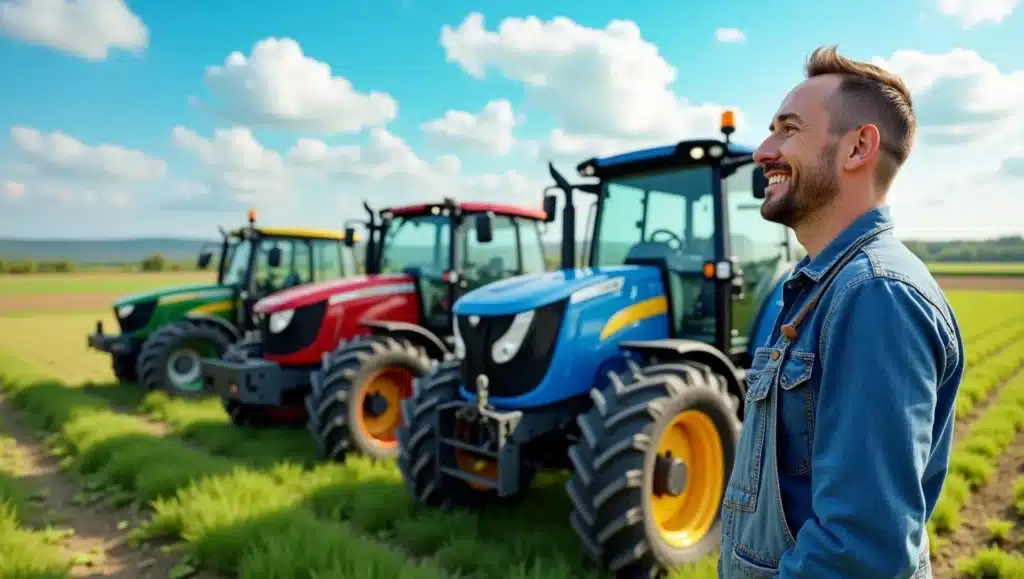
5. Return on Investment for Farmers
While AI tractors may seem expensive upfront, they deliver long-term savings that far outweigh the initial costs. For example, the average AI-powered tractor from Monarch or John Deere may cost between $50,000–$100,000 depending on the features. But the savings in labor, fuel, and maintenance quickly add up.
AI tractors operate with fewer breakdowns due to predictive diagnostics. They reduce fuel usage by optimizing field routes and minimize overlaps that waste seed, fertilizer, and time. Moreover, their ability to work continuously, even overnight, improves throughput, especially during peak planting and harvesting windows.
Farmers also benefit from precise data that improves yield forecasting and pest control, leading to better financial planning. Studies show farms that switch to smart farming technologies see up to a 20% increase in efficiency and 15% yield improvement within the first year.
For those concerned about affordability, many regions now offer government-backed grants, agtech financing, and cooperative investment models to lower the AI tractor investment burden.
6. Obstacles to Adoption
Despite the promise of AI-powered tractors, adoption is not without hurdles. The most prominent barrier is the initial investment, especially for smallholder farmers. While long-term ROI is positive, the upfront cost is still a deterrent in low-income or resource-constrained regions.
Another major issue is rural connectivity. Many AI tractors depend on cloud connectivity and real-time GPS data, which isn’t always available in remote or underdeveloped areas. Without reliable internet, their full capabilities can’t be used.
Farmers also face digital literacy challenges. Operating smart tractors often requires basic tech knowledge, such as using mobile apps or interpreting machine data. For older or less tech-savvy farmers, this learning curve can be intimidating.
Lastly, there’s resistance to change. Some growers remain skeptical about relying on machines for decisions they’ve historically made using instinct and experience.
To overcome these barriers, it’s crucial that governments and agtech companies offer training, subsidies, and infrastructure support, making smart farming accessible to all.
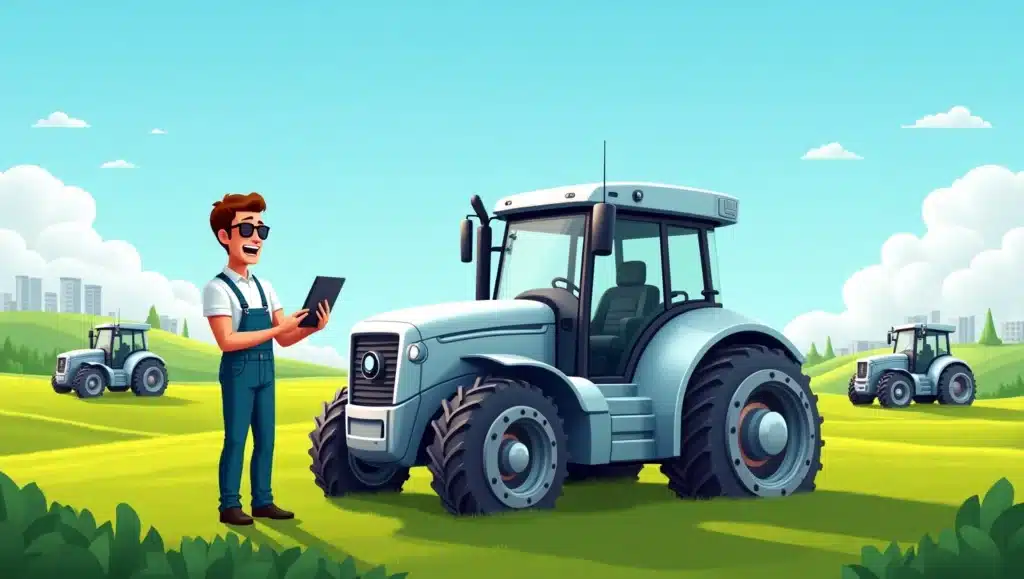
7. Future Possibilities
As the adoption of AI-powered tractors grows, the future of agriculture is poised for even more innovation. These machines will become central to fully smart farms, where every element, from irrigation to harvesting, is automated and optimized.
One exciting frontier is predictive farming. By analyzing weather forecasts, soil data, and crop health in real time, AI tractors will not just respond to conditions, they’ll anticipate them. Imagine tractors adjusting watering levels before a drought or scheduling harvests ahead of heavy rainfall. This kind of foresight could revolutionize sustainable agriculture.
AI tractors will also integrate with drones, autonomous harvesters, and even blockchain-based traceability systems, giving farmers complete transparency and control over every aspect of food production.
By 2030, farming may look very different. Smaller, modular autonomous machines could swarm fields, analyzing data, planting, and harvesting with unprecedented precision and environmental responsibility.
The future of farming isn’t just autonomous, it’s intelligent, sustainable, and deeply data-driven.
8. Conclusion & Call to Action
From field-level inefficiencies to climate pressures, the problems in modern agriculture are growing more complex. But so are the solutions. AI-powered tractors are not just a trend, they’re a tangible answer to some of the biggest challenges facing farmers today.
Whether it’s saving fuel, increasing yields, or optimizing labor, these smart machines are changing how we grow food. And as prices drop and infrastructure improves, AI tractors are becoming more accessible than ever.
The smart farming future is here. Now is the time to explore how you can integrate agriculture technology into your own farm or agricultural business.
👉 Call to Action: Ready to modernize your farm? Download our free guide on “Top AI Tools for Farming in 2025” or explore our recommended smart tractor solutions.
FAQs:
Q1. What is an AI-powered tractor?
An AI-powered tractor uses artificial intelligence to navigate, optimize routes, and perform fieldwork autonomously with minimal human input.
Q2. Are AI tractors better than traditional tractors?
Yes, they offer improved precision, reduced fuel costs, lower labor dependency, and better crop yields.
Q3. How much does an AI tractor cost?
Depending on the brand and features, AI tractors typically range from $50,000 to $100,000 or more.
Q4. Can small farms afford AI-powered tractors?
Many companies now offer leasing, financing, and government subsidies to make them accessible to small farms.
Q5. Who are the top AI tractor manufacturers?
Leading companies include John Deere, Monarch Tractor, CNH Industrial, and AgXeed.
Related Articles
Livestock Farming
AI in Aquaculture: How Smart Tech is Transforming Fish Farming
1. Introduction: The world’s appetite for seafood is growing fast, yet traditional...
Livestock Farming
Using AI to Track Livestock Health and Prevent Disease Outbreaks
1. Introduction: In recent years, livestock farmers around the world have faced...
Livestock Farming
How Machine Learning Is Changing Fertilizer Application on Farms
1. Introduction: For decades, farmers have applied fertilizer using general formulas, blanket...
Livestock Farming
What Is Smart Farming? A Beginner’s Guide to AI in Agriculture
1. Introduction: By 2050, global food demand is expected to increase by...
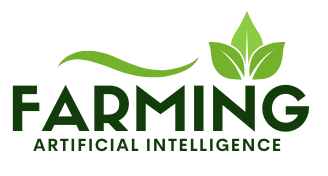



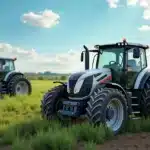

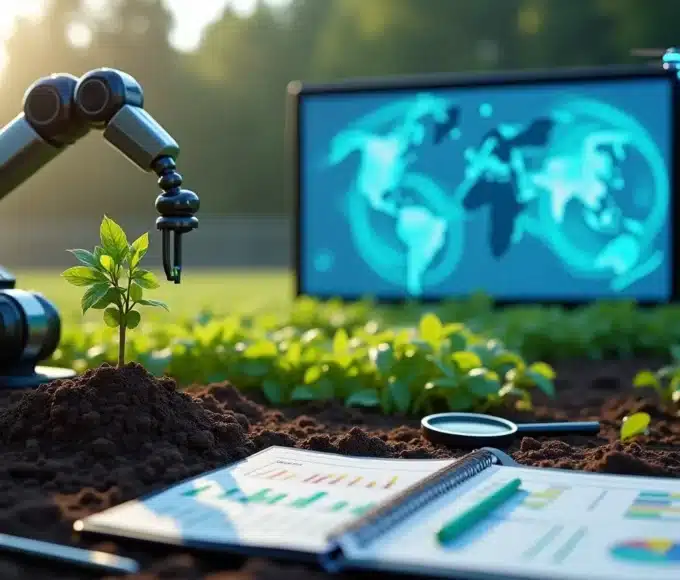
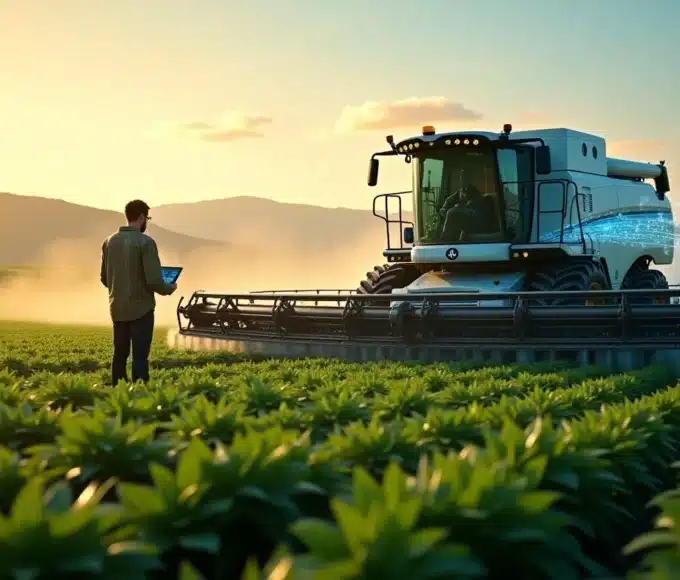
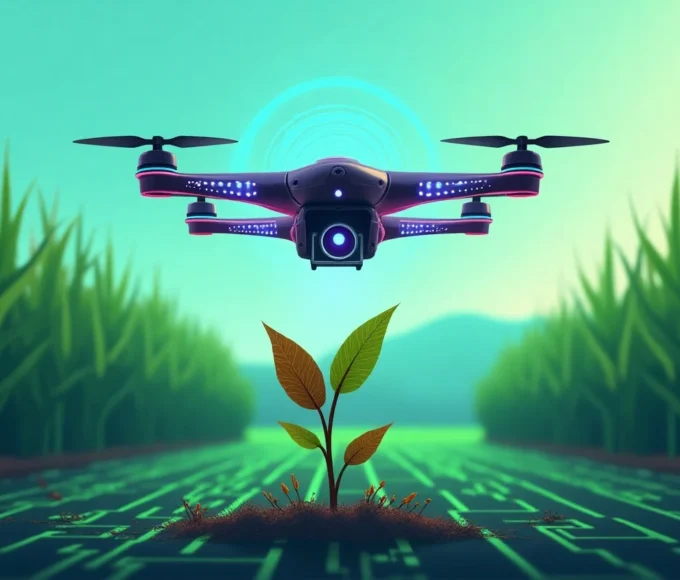
Leave a comment